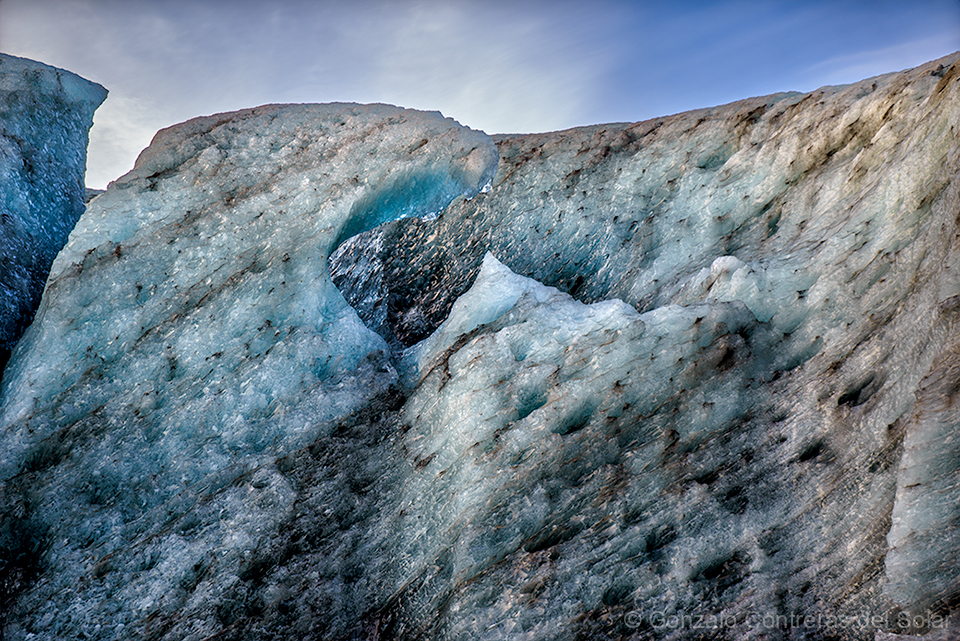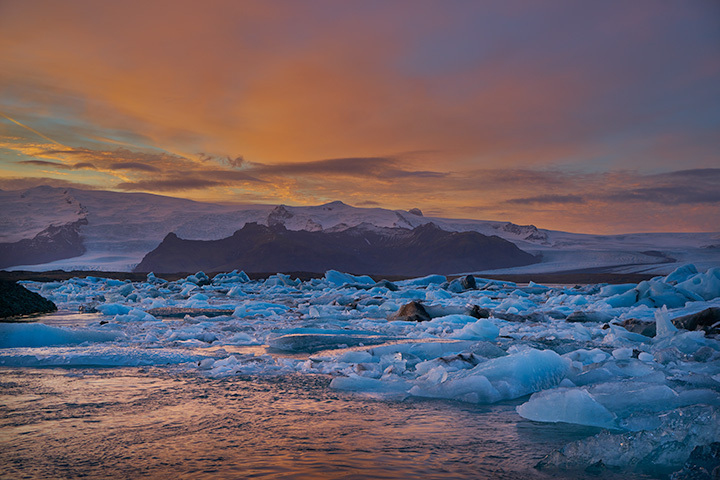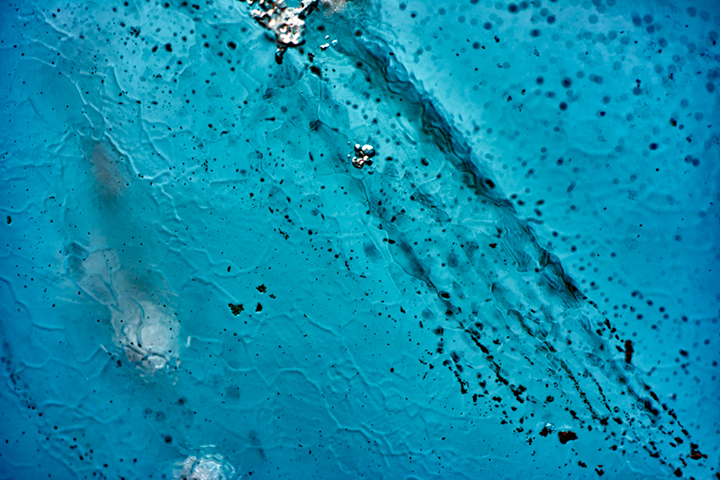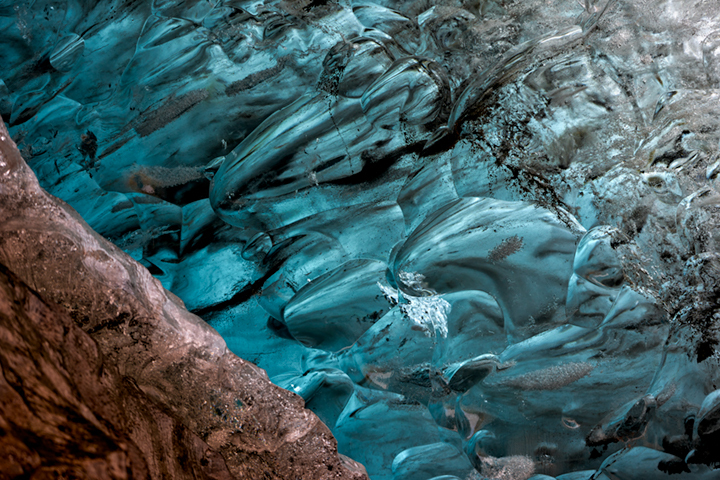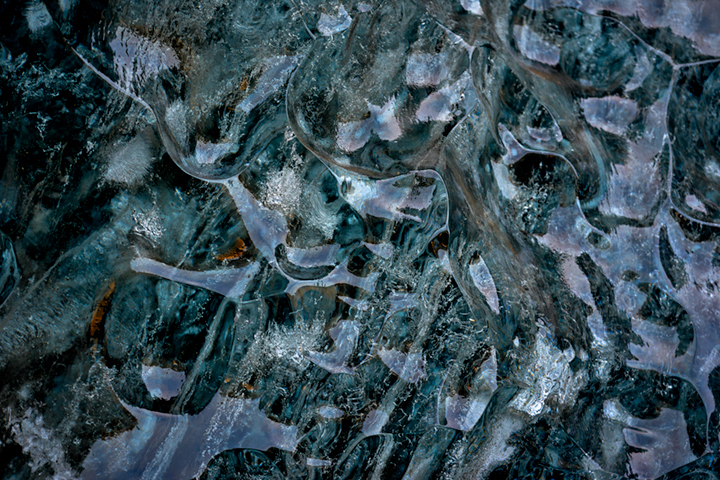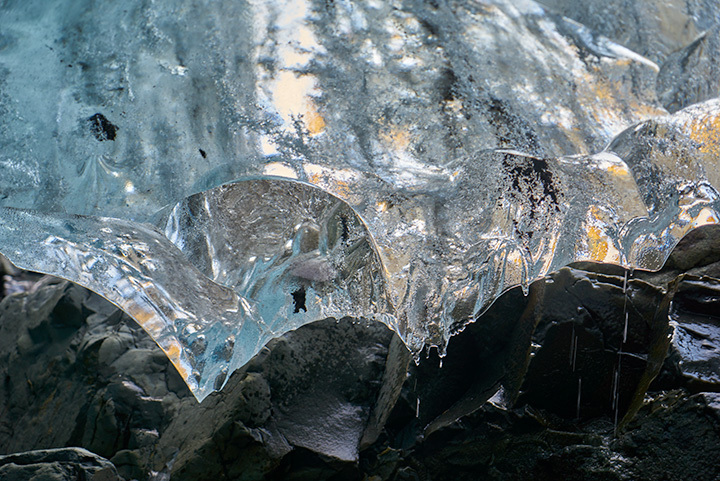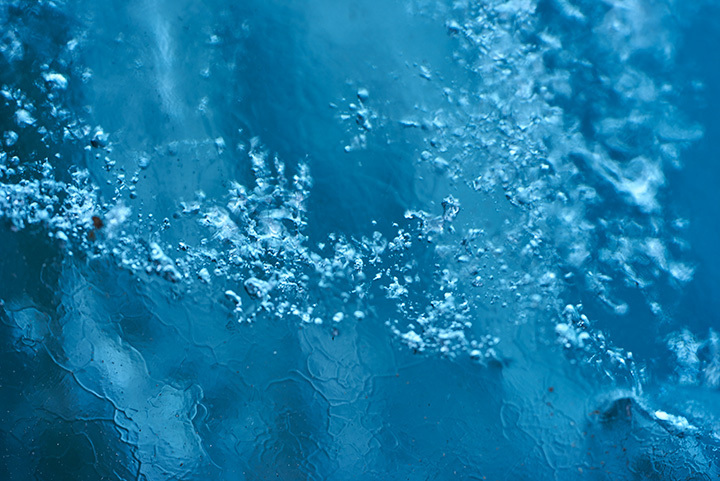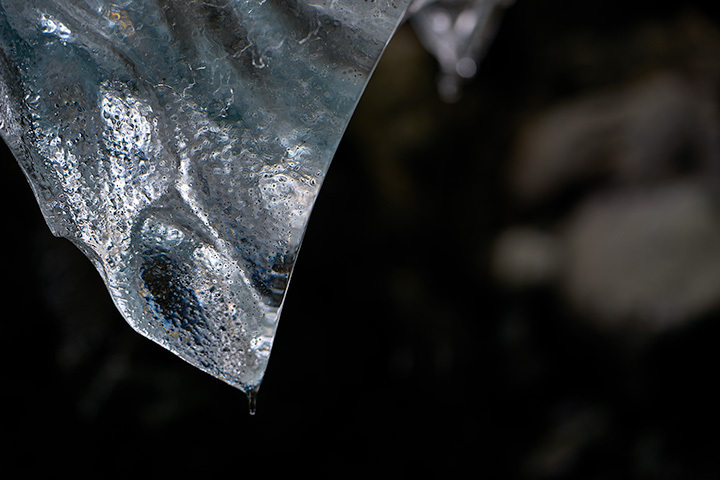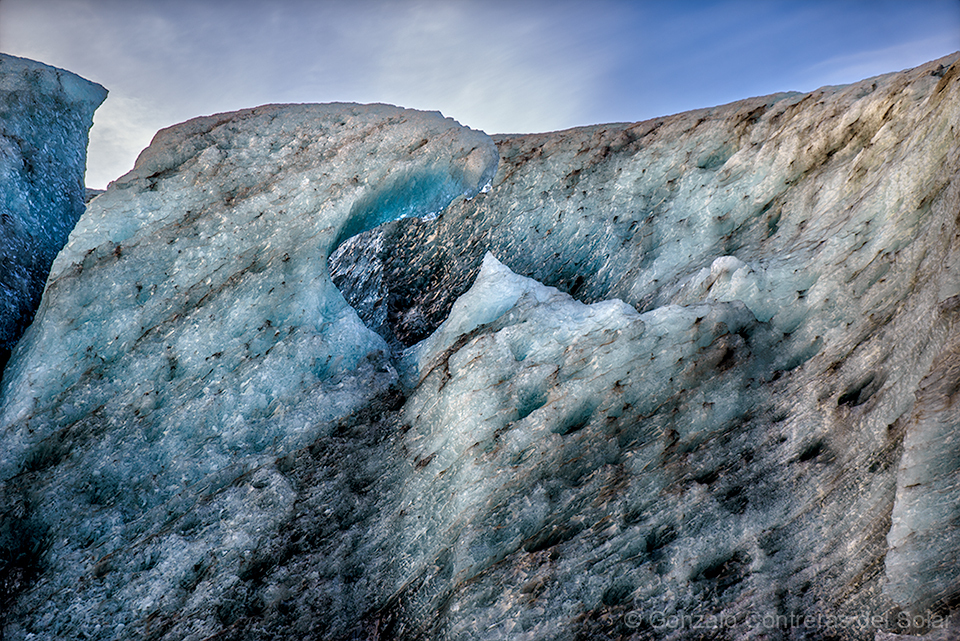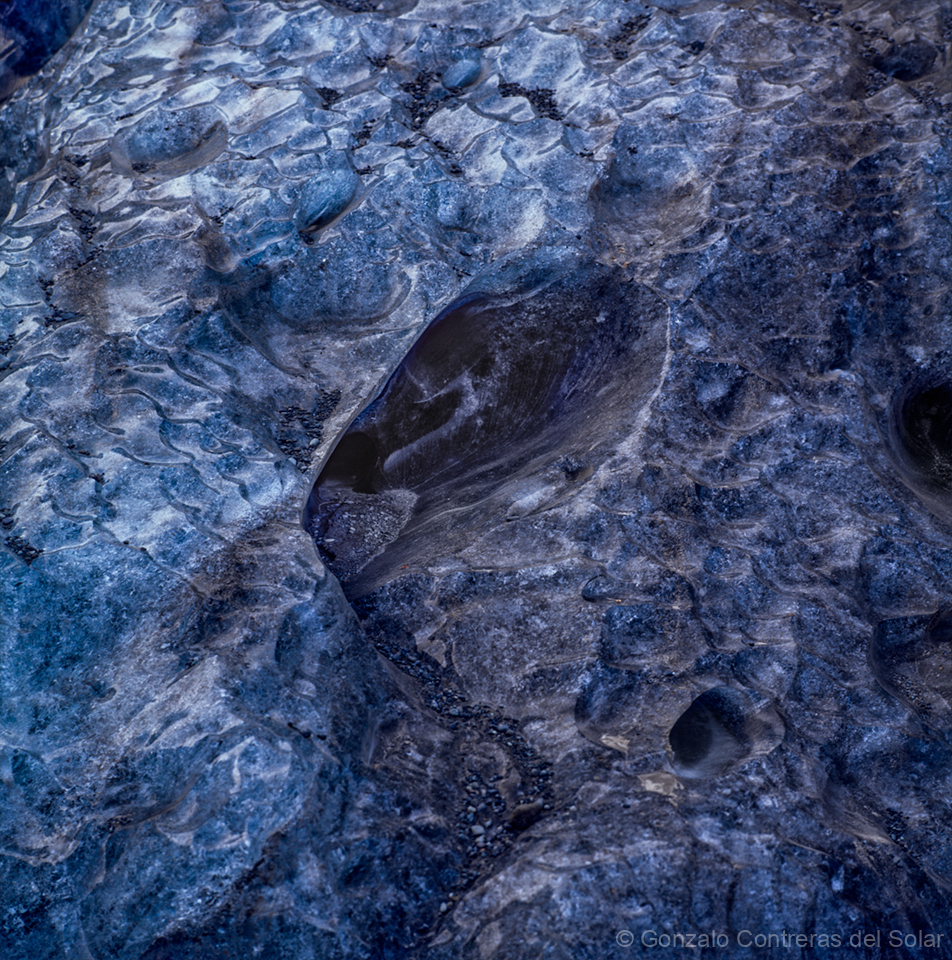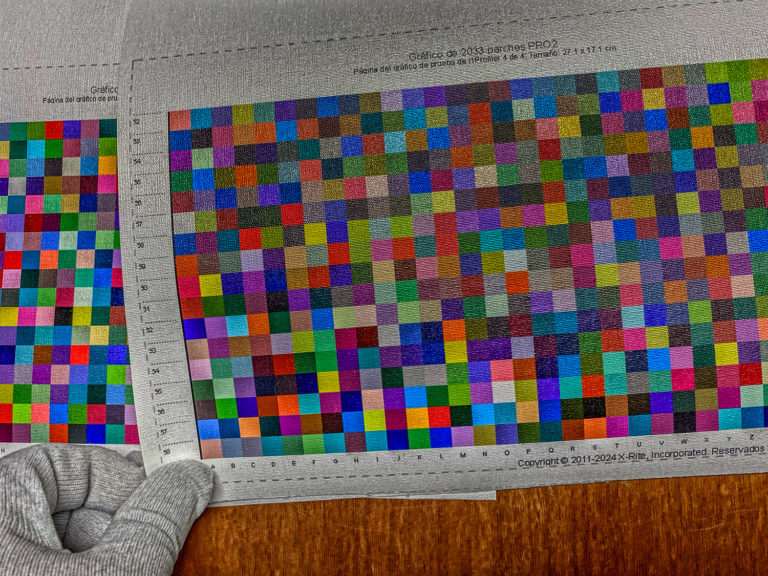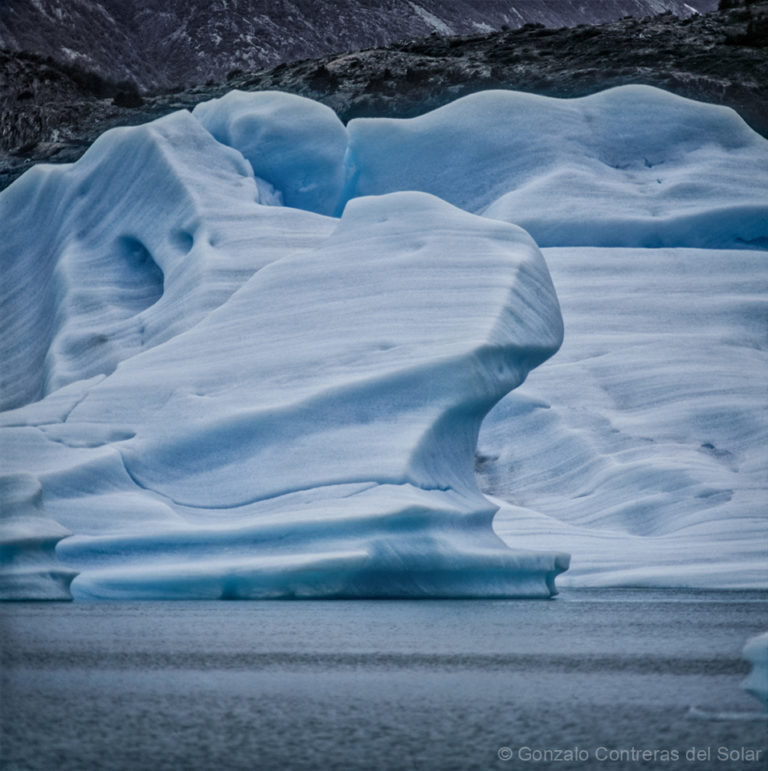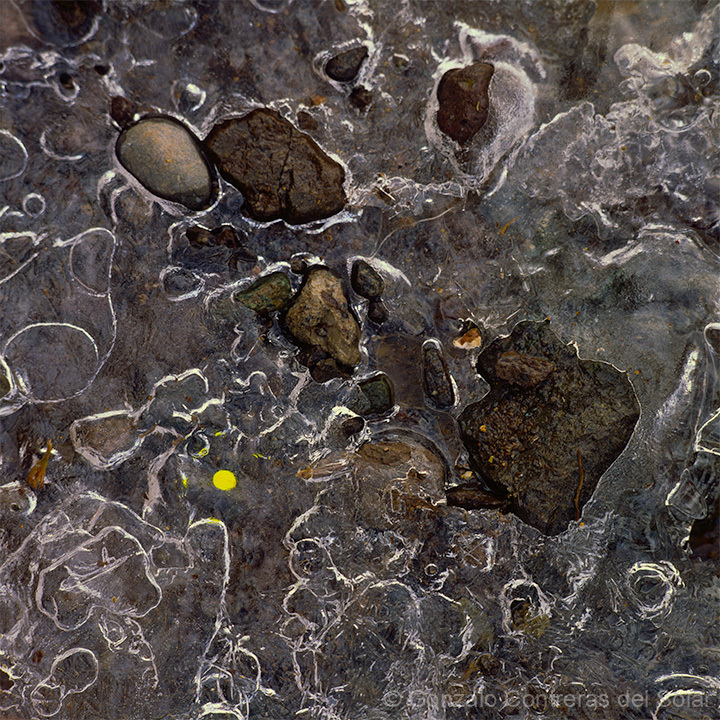The journey to Breiðamerkurjökull Glacier felt like traveling through layers of time. Its ice bore dark veins—black traces of volcanic ash whispering of eruptions and seasons long gone.
Unlike the blue clarity of Chile’s Grey Glacier or the vanished caves of Zongo in Bolivia, this Icelandic landscape seemed both alive and haunted, suspended between fire and frost.
Here, icebergs begin a brief voyage through Jökulsárlón Glacier Lagoon, before drifting into the North Atlantic Ocean. In 1985, the glacier’s edge lay only three kilometers from the sea; today, that distance has stretched to nine.
Four decades have lengthened the journey of each iceberg—an unspoken measure of how far the ice has withdrawn from the world it once touched.
Once, vast caves drew explorers deep into the glacier’s core. Today, their entrances have melted away—fractured, erased by warmth.
The place where the main cave stood in 2016 lies nearly 450 meters from the glacier’s current edge.
From satellite images I repainted, the retreat becomes undeniable: between 2012 and 2016 alone, the glacier’s tongue withdrew more than 790 meters. Decades unfold in silent flight—each image another measure of loss.
Breiðamerkurjökull Glacier stands as a monument in transformation. Its darkened ice holds within it both destruction and creation—earth’s fire and frozen breath meeting in fragile balance.
Though what has melted cannot return, each photograph preserves a trace. These are not elegies, but witnesses to change. The world still speaks, even through silence.
Explore the series at gcs.photo — fine art photography where water, memory, and time become poetic meditation.
